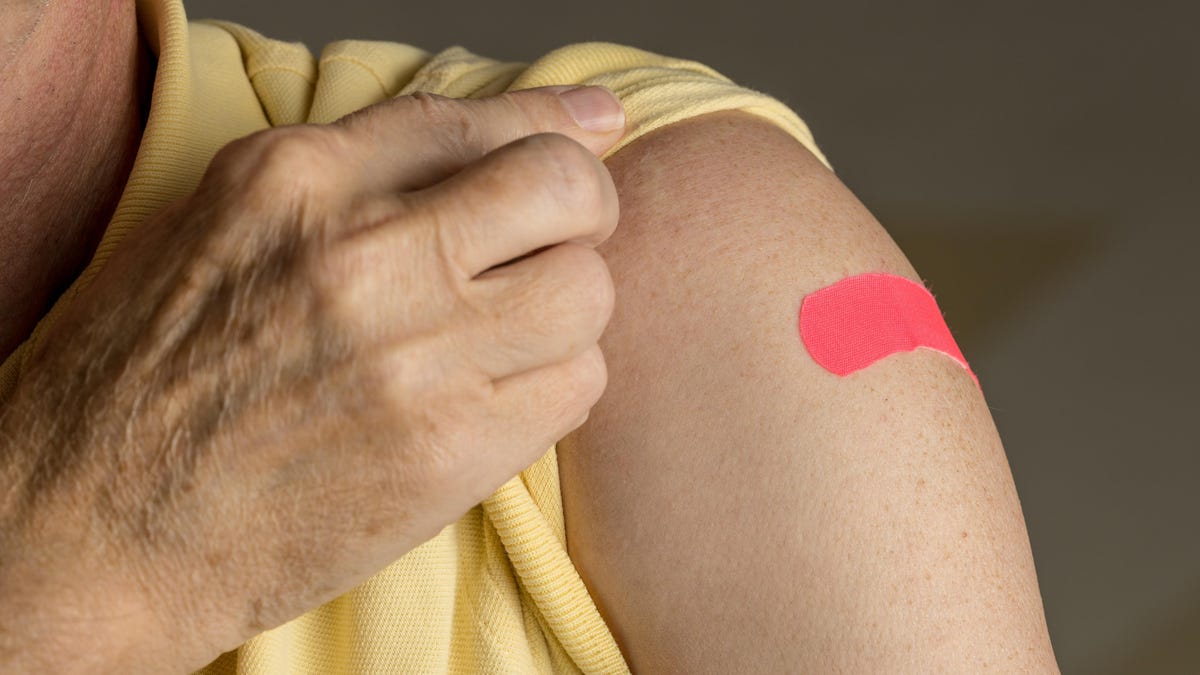Everything You Need to Know About Getting a Vasectomy
Now more than ever, it might be time to get a vasectomy. Many people are saying this—or googling it, anyway; online searches for “vasectomy” spiked dramatically in the wake of the May leak of the Supreme Court’s draft opinion...

Now more than ever, it might be time to get a vasectomy. Many people are saying this—or googling it, anyway; online searches for “vasectomy” spiked dramatically in the wake of the May leak of the Supreme Court’s draft opinion on the fate of Roe v. Wade, a trend that seems poised to continue now that the constitutional right to abortion care is a thing of the past. Some men, it seems, also recognize they have a vested interest in laws seeking to dictate the decisions a person can make about their own body. (Some of them have even already made the leap.)
Certainly if you are fertile and have a functioning penis and testicles and are 100% sure that you don’t want to use them to make any babies in the future, a vasectomy is the way to go to prevent unwanted pregnancies. Traditionally, the onus for doing so has fallen on the half of the population with ovaries, whether that means taking a birth control pill (which carries a certain degree of risk), undergoing a tubal ligation (a procedure far more dangerous than a vasectomy), buying condoms for their reluctant partners or getting an after-the-fact abortion.
Stacked against these options, a nearly 100% effective outpatient procedure with a short recovery time and “little evidence” of long-term side-effects seems like the least you can do. That doesn’t mean the notion isn’t unnerving—so here’s a primer on what to expect from your vasectomy.
Two types of vasectomies
Though the first vasectomy performed on a human took place at the end of the 19th century—a procedure that, disturbingly, arose from the eugenics movement—it emerged as a viable means of birth control in the post-World War II era. Across the decades—through the early 1980s—the mechanics didn’t change much, but these days, you have two types of vasectomies to choose from, each of which differs based on how the surgeon accesses your baby-making bits: a conventional vasectomy and a “no-scalpel vasectomy.” The latter was developed in China in the 1970s alongside the establishment of its two-child policy (which later became the one-child policy before restrictions were loosened again in 2016) and brought to America in 1985.
Just based on the names, I can already guess which one you’re going to want to choose—but let’s talk about the differences between them.
Conventional vasectomy
In a conventional vasectomy, the doctor makes two small incisions on either side of your scrotum, which allows access to the vas deferens, the tiny tubes that carry sperm from the testicles to the penis. The tubes will be cut and small sections—1 or 2 inches—removed from both; one or both ends of each tube may also be seared before they are tied off with a suture.
No-scalpel vasectomy
In a no-scalpel vasectomy, the doctor makes a single hole in the center of the scrotum using a ringed clamp called a hemostat, which will “puncture through the skin of the scrotal sac. Then, the skin is gently spread only until both vas deferens can be visualized.” To put it bluntly, the doctor then fishes around to find and extract a small loop of each vas deferens, one at a time, and then cuts them, removing a small section of tubing and suturing (and, again, possibly first searing) the open ends.
Which is better?
Either method of vasectomy will effectively sterilize you. The issue isn’t one of efficacy. But because it is a less invasive procedure, the no-scalpel vasectomy is much faster to perform (taking about 30 minutes) and usually results in less bleeding, a five-fold decrease in (already rare) infections, less bruising and a shorter recovery time. So why would you choose to get a conventional vasectomy? Well, simply because the procedure is newer—even though it has been practiced in the U.S. for 35 years at this point—it can still be harder to find a doctor to do it for you. Fortunately, the internet has made finding one near you a lot easier.
Can you get a vasectomy right away?
Before agreeing to perform your vasectomy—whichever kind you choose— your doctor will want to consult with you. During this meeting, the doctor will examine your junk for any physical peculiarities that might pose a challenge during the surgery and also talk with you about your reasons for seeking permanent sterilization. The doctor will want to A) make sure you know it’s considered a permanent solution to your fertility problem (vasectomies can be reversed, but not always successfully, and the process is tricky and expensive) and B) that you are really, truly 100% sure you want one.
This will mean reading and signing a bunch of onerous paperwork outlining your intent (while also noting that there is a very small chance you’ll get someone pregnant anyway). (Seriously, it’s very small.) You may even need to submit to a “cooling off period.” If you live in New York City, you’ll have to wait 30 days between your initial consult and the procedure; the same holds true if your insurance is federally funded. Elsewhere, your wait times may be shorter, so you’ll want to discuss the timing with your doctor.
Some patients have reported doctors pressuring them to rethink their choices, especially if they are young. If this happens to you, I’d suggest finding a different doctor.
Vasectomy prep and the day of
Vasectomies are almost always performed on an outpatient basis, so don’t expect to book a hospital stay. In the days leading up to your operation, the doctor will give you a list of dos and don’t that you should follow to the letter; usually this will include fun things like “don’t take any aspirin” and “shave your balls” (though no matter how good a job you think you’ve done on the latter, they will probably give you a touchup once you’ve removed your pants and are lying on the operating table). You’ll likely need to bring an athletic supporter with you and show it to the office staff before you can get started (as you definitely want to support your junk afterward in order to reduce the possibility of post-surgical injury). You’ll also need to arrange transportation: Driving is generally not advised, though there’s nothing to stop you from, say, taking the subway home (just speaking hypothetically here).
Depending on where you have the procedure done, you may be given the option to choose between local and general anesthesia. Strictly speaking, a vasectomy doesn’t require you to be put under, but some patients get so stressed out that their body causes their reproductive organs to tighten up, which can make it hard for the doctor to do the job. Or maybe you just don’t want to remember the experience. General anesthesia carries additional risks and might not be covered by your insurance.
Once you get to the doctor’s office, you’ll be asked to take off your clothes and dress in a surgical gown. Assuming you’ve chosen a local anesthetic, you’ll be given a numbing shot in your scrotum. At this point the nurse will also probably finish removing any remaining hair from the surgical site.
What does it feel like?
We have already pointed out that vasectomies are safe and effective. So why do so many people still get anxious about them? Well, those who’ve lived their whole lives with their sensitive genitals flopping about outside their bodies know how much it sucks to injure them, so they are probably chiefly concerned that the procedure is going to hurt. So does it?
Well, that’s what the anesthetic is for. Getting a vasectomy definitely feels weird, but if you’ve been properly numbed up, it won’t strictly hurt. You’ll feel some tugging and some pressure, but no pain. In theory: In a personal account for the Guardian, comedian and writer Rob Delaney reported feeling some degree of pain during his own procedure and asking for more anesthetic (which is something you might’ve had to do before at the dentist).
Writing for Men’s Health, Grant Stoddard also notes one more weird thing you can look forward to: the smell of your own body parts cooking as the vas deferens are cauterized. You shouldn’t feel it, but you might notice a little puff of smoke, a hissing noise and a certain... aroma. So that’s fun.
The aftermath (or: When can you have sex?)
While most people’s experiences of undergoing a vasectomy will follow the outline above, everyone’s recovery will look a little different. If there have been no complications, you should be able to leave the doctor’s office shortly after your surgery, your junk clamped tightly in a jock strap you’ll have to wear for the next week.
Vasectomy.com (what a fortuitous URL!) gives a good outline of what you can expect to have to do in the coming days as your body heals. Some people will feel more or less back to normal in a few days; others may experience pain and discomfort lasting a few weeks or longer. The list is none too surprising: Get a lot of rest, don’t do anything too strenuous, don’t bathe or shower for up to 48 hours afterward, apply ice packs to reduce any swelling, take acetaminophen (not aspirin or ibuprofen) for pain and watch out for signs of infection.
Beyond the physical effects, you may have emotional reactions you weren’t expecting. This isn’t to say you’ll regret undergoing the procedure—the majority of those who do report they do not regret their choice—but
you could feel some sadness or a sense of loss
. Some of this could be related to your body having undergone the trauma of surgery, and will fade with time. A few days of the no-baby-blues immediately afterward is normal, and you may have occasional periods during which you wonder if you did the right thing for years (at which point you can remind yourself of all the very good reasons you had for doing it in the first place). But if you experience lasting, disruptive emotional side-effects, talk with your doctor.
Definitely don’t have sex right away (and definitely, definitely don’t have sex without using birth control until you’ve been given the all-clear to do so; more on that in a second). Though lots of guys on Reddit will brag about doing it “right away,” Vasectomy.com advises waiting at least a week before you attempt to ejaculate. And be warned: the first few times you do so, your semen could look pretty weird. Like, there may be blood in it. Which is unsettling, but normal, as these things go. And even weeks and months later (though eventually subsiding for most people), you may feel a recurring twinge of ache in your groin during sexual arousal. It won’t prevent you from enjoying sex, exactly, but you’ll notice it. As long as it’s classifiable as mild discomfort, you don’t need to worry about it—but it’s never a bad idea to bring up any concerns with your doctor.
Fertility, post-vasectomy
Your doctor will schedule a few followups with you after your procedure. One of them will be simply to gauge how you’re healing and make sure everything looks ok down there, but the others will be of grander import, because they’ll be the ones that will confirm that the snip-burn, snip-burn was indeed effective and that there is no longer semen in your ejaculate.
A critical note: Before you have been declared officially sterile, you cannot have sex without birth control.
Three months after the procedure—and after 20-30 ejaculations, so you have some fun homework to look forward to—you’ll need to get a semen analysis, which will involve providing a sample at a clinic (whether, er, produced on-site or delivered from your home in an approved receptacle within one hour of ejaculation). Your sample will be checked for any swimmers. If none are found, you’re good to go (most only have to do this part once). But if you’ve still got a few of them buzzing around in there, you’ll need to come back and do it all over again in a few weeks.
And that’s that. You can now have sex any which way you want without worrying about getting anyone pregnant (though you’ll still have to worry about sexually transmitted diseases, obv). Many people report the prime of their sex lives comes post-vasectomy. Not having to think about burdening another soul with the curse of existence: totally a turn-on.
This article was originally published in August 2020 and updated on June 28, 2022 with additional context around the Supreme Court’s overturning of Roe v. Wade.

 UsenB
UsenB 































